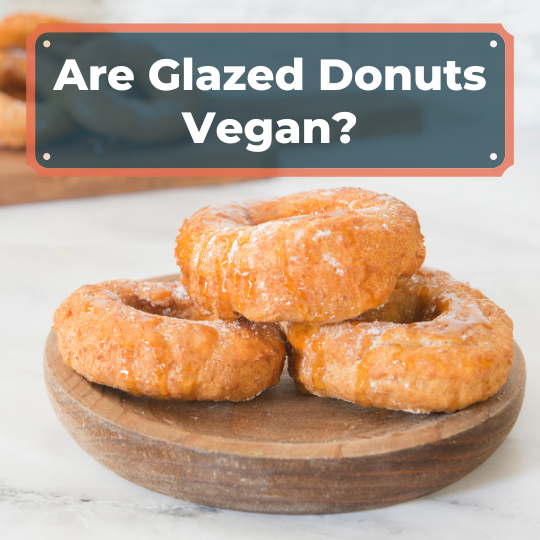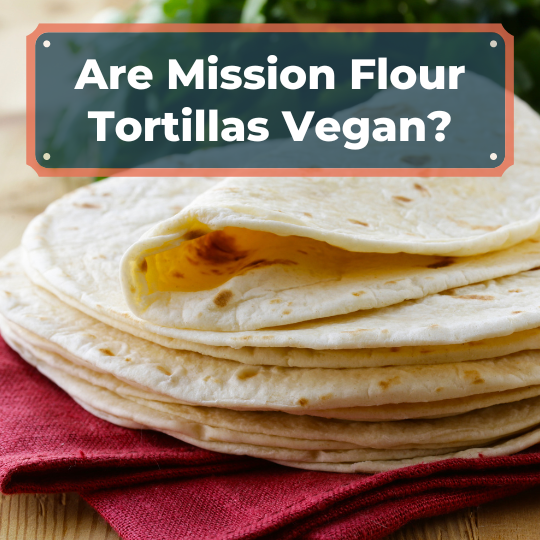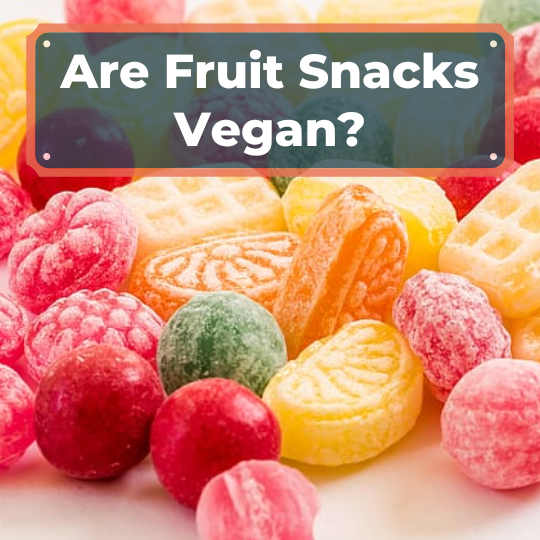Several years after starting my vegan journey, I learned there was an even more extreme version of veganism – the raw vegan diet.
This involves not only eliminating animal products from your diet but also making a commitment to only eat raw uncooked foods.
So, can you lose weight with a raw vegan diet? If so what are the safety issues? What is the raw vegan diet weight loss 1-month estimates?
You can certainly lose weight with a raw vegan diet! Depending on your particular meal plan, you could lose 4 to 15 pounds in the first month alone.
The only safety issue you’ll need to worry about is that you’ll need to make sure you’re getting enough macronutrients, as many first-time raw vegans don’t consume enough protein or fat in their diet.
Shortly after the pandemic, I decided to challenge myself with a raw vegan diet for one month. During those thirty days, I pushed my physical limits as well as my creativity in the kitchen!
Today, I’m going to show you everything I learned. I’ll also provide you with raw vegan weight loss estimates and address some of the most commonly mentioned safety issues with a raw diet.
Vegan Vs. Raw Vegan Diet: What’s The Difference?

I’ve been a vegan for just over seven years now. When I first started, it was definitely a bit of a challenge and I had to completely rearrange my diet and reevaluate every single food and beverage I consumed.
After my first few months, though, I was in my groove and loving my new diet, higher energy levels, and a guilt-free conscience.
When I decided to challenge myself with a raw vegan diet, I realized just how much I relied on cooking my food.
What makes a raw vegan diet different from a traditional vegan diet?
Well, it all comes down to how the food is prepared. On a raw vegan diet, you’re only allowed to eat raw plant-based foods. This means that all of the food you consume can’t be cooked or heated above 115 degrees Fahrenheit.
What Happens To Food At High Temperatures

At this point, you’re probably wondering, “Why raw? What’s so bad about cooking my food?” As it turns out, cooking food (especially nutritious plant-based food) eliminates or reduces many of the nutrients in the food.
Following this logic, most vegans aren’t getting anywhere near as many vitamins and minerals in their diet as they may think!
By consuming a raw vegan diet, you’re getting the full benefit of the plants you’re eating. The downside to a raw vegan diet is that raw food doesn’t always taste as good as cooked food.
For example, one of my favorite dinner meals has always been steamed broccoli topped with “nooch” (nutritional yeast) that gives it a delicious, cheesy flavor. Unfortunately, this is a no-no on a raw vegan diet, so I had to get used to eating raw broccoli florets…
Exploring Nature’s Bounty

One of the biggest challenges I faced in my raw vegan diet was that I had to completely change the way I consumed rice and beans. Instead of boiling my rice and beans like I was used to doing, I had to soak them for 24 to 48 hours at a time.
As you can imagine, this required a lot of extra planning and time. Given the extra planning, I ended up avoiding rice and beans for the most part.
If I had free time, I’d let some chickpeas or orzo rice soak in preparation for a weekend dinner, but I mostly stuck to fresh fruits, vegetables, nuts, and seeds.
I also had to give up vegan milk, as it’s pasteurized (heated) before packaging. This meant no more soy milk, almond milk, or oat milk. I would have to completely give up my favorite morning ritual of vegan cereal-with-milk.
This brings me to the point – I really had to explore more natural food options.
I could no longer rely on a simple diet of rice, beans, and a few basic fruits and veggies. To make my diet interesting and ensure that I got all of the nutrients I needed in my diet, I had to explore everything that nature had to offer.
Some of my favorites that I discovered along my raw vegan journey were:
- Sunflower seeds
- Pumpkin seeds
- Brazil nuts
- Almonds (and almond butter)
- Peas (turns out they’re a good source of plant-based protein)
- Steel-cut oats (soaked overnight)
- Orzo (a soft rice grain with a pasta-like consistency)
- Pears
At first, it seemed like it was going to be a bit challenging. However, I quickly discovered how fun it was. Going to the grocery store felt more like foraging in the wild and less like a boring trip to grab the same old vegan staples.
To learn more, check out this awesome TedX talk from a raw vegan chef:
Raw Vegan Weight Loss: 1 Month Weight Loss Estimate
One of the main reasons why people switch to a raw vegan diet (or do raw vegan “challenges”) is to lose weight. When consuming your average vegan diet, it’s easy to consume just as many calories as a non-vegan carnivorous diet.
With vegan alternatives like Beyond Meat burgers, sugary vegan cereal, and vegan bread, it’s easy to lose track of how many calories you consume.
When you adopt a raw vegan diet, you have to give all of these things up. Anything that’s ever been cooked must go.
Bread and cereal are baked, vegan burgers are cooked, and almost every single processed vegan food item has undergone some type of cooking.
Most raw vegans have to switch all of their calorie-heavy “vegan alternatives” for the real deal: things that grow out of the ground.
Pure plant-based food is far less calorie-dense, which means that most raw vegans consume considerably fewer calories than traditional vegans. 150 calories of vegetables take up more space in your stomach than 500 calories of artificial meat substitute.
Calories Still Matter…
Ultimately, your weight loss is determined by one thing and one thing only: the number of calories you consume. Could you become a raw vegan and not lose weight? Sure, but you would likely have to eat until you’re sick.
There are 3,600 calories in one pound of fat.
So assuming that you create a caloric deficit of 500 calories per day (which is easily achievable on a raw vegan diet), you’ll create a weekly deficit of 3,500 calories.
This means that, on average, you’ll lose a pound per week. Losing a pound per week is a safe, normal rate of weight loss.
Now, let’s assume you decide to go all-in and create an even larger caloric deficit… Here’s a quick table to help you calculate how much weight you’ll lose on a raw vegan diet:
| Daily Caloric Deficit | Estimated Weekly Weight Loss |
| 250 | .5 pound |
| 500 | 1 pound |
| 600 | 1.17 pounds |
| 750 | 1.5 pounds |
| 900 | 1.75 pounds |
| 1,000 | 2 pounds |
The goal of weight loss is to create sustainable change. Personally, I wouldn’t recommend a 1,000 calorie daily deficit, as it could leave you hungrier and put you in a state where it’d be easy for you to relapse. Instead, I’d recommend sticking with a 500 to 750 calorie daily deficit.
If you’re not sure how many calories you need, then I recommend checking out the Mifflin-St. Jeor TDEE (Total Daily Energy Expenditure) calculator here.
It calculates your gender, age, and weight along with your daily activity level to show you how many calories your body consumes on a daily basis.
By eating less than your body requires to maintain its existing weight, you’ll lose weight. Pretty simple, right?
Raw Vegan Weight Loss: Safety Issues Addressed

If you look at raw veganism from an evolutionary perspective, it makes sense. The earliest humans primarily consumed a plant-based diet. Hunting was dangerous and took lots of time, so eating meat was a rare commodity.
As you may also remember, early humans didn’t understand fire very well, and they certainly didn’t have access to pots and pans to simmer and boil foods. As a result, most primitive humans ate raw fruits, vegetables, nuts, and starches that grew out of the ground with little to no cooking.
That being said, humans have evolved a bit, and our stomachs aren’t quite as strong as they once were! Raw veganism does come with a few challenges and safety issues that I’ll address below.
Make Sure You Supplement With Vegan Protein

When I challenged myself with a 30-day raw vegan diet, I quickly realized my biggest mistake was that I wasn’t consuming enough protein. On the fourth day, I was doing some chores around the house and I got hit by this sudden wave of weakness.
It was as if all of the energy had left my body. I got lightheaded, woozy, and had to sit down before I passed out.
After doing a bit of research, I realized that I wasn’t consuming enough protein. Eliminating beans and vegan meat from my diet had taken its toll.
To address this, I purchased an organic vegan protein powder, which I would combine with mashed-up figs and almond butter to make little raw vegan protein balls.
I also started eating a lot more seeds and nuts, which are great sources of raw, uncooked protein. Keep in mind that seeds and nuts are very calorie-heavy, though, so you’ll want to measure your portions if you’re on a weight loss diet.
Can I Get Sick From Eating Raw Food?
One of the biggest health concerns associated with a raw vegan diet is that there’s an increased possibility of contracting food-borne illness.
Cooking food ensures that any residual bacteria is destroyed under high temperatures. This is part of the reason why humans started cooking their food, in the first place!
There are two pieces of advice that I’d give you to ensure that you don’t get sick from a raw vegan diet:
- Purchase organic fruits and vegetables.
- Thoroughly rinse all of your fruits and veggies.
Why organic? Well, most of the food-borne bacteria outbreaks have come from massive commercial farms, where conditions are often unsanitary and the fruits and veggies are genetically modified, making them more susceptible to disease and bacteria.
Why should you rinse your food? As it turns out, rinsing your food under water for 30 seconds removes most bacteria.
This is because the bacteria is typically attached to the residual soil on the surface of the fruit or vegetable.
By rinsing your food, you’ll remove this excess soil (along with any water-based pesticides/herbicides) and make your food far safer to eat.
Raw Vegan Diet & Diarrhea

One complaint that I’ve heard from first-time raw vegan dieters is that some of them suffer from loose stool and diarrhea after switching to a raw diet.
This is perfectly normal when you make a radical dietary change, and should go away on its own within a few days.
Your body usually needs a few days to accommodate to your new diet and change how it processes food.
If it’s been several days and you’re still experiencing loose stool, then it may be that you’re not consuming enough fiber. This is common for raw vegan dieters who consume a lot of fruit and not enough veggies, nuts, and seeds.
To remedy this, make sure you’re consuming leafy greens and fibrous veggies like carrots, broccoli, and Brussel sprouts.
Should I Switch To A Raw Vegan Diet?
Making the switch to a raw vegan diet is a huge change and may not be right for everybody.
That being said, raw vegan diets are incredibly healthy. So, even if you don’t stick with it for life, I definitely recommend trying it for a month or two to see how it makes you feel. Who knows, maybe you’ll love it!
Personally, I found that it was a fun challenge that helped me lose a few pounds and opened me up to eating more raw foods.
Even after I quit my raw diet, I found that I naturally consumed more raw foods without thinking about it.
I still enjoy a Beyond Meat burger from time to time, but I try to make them an occasional treat, not an everyday meal plan.
By the way, if you’ve never tried vegan burgers, then check out my post on the best vegan burger patties and give them a try!




